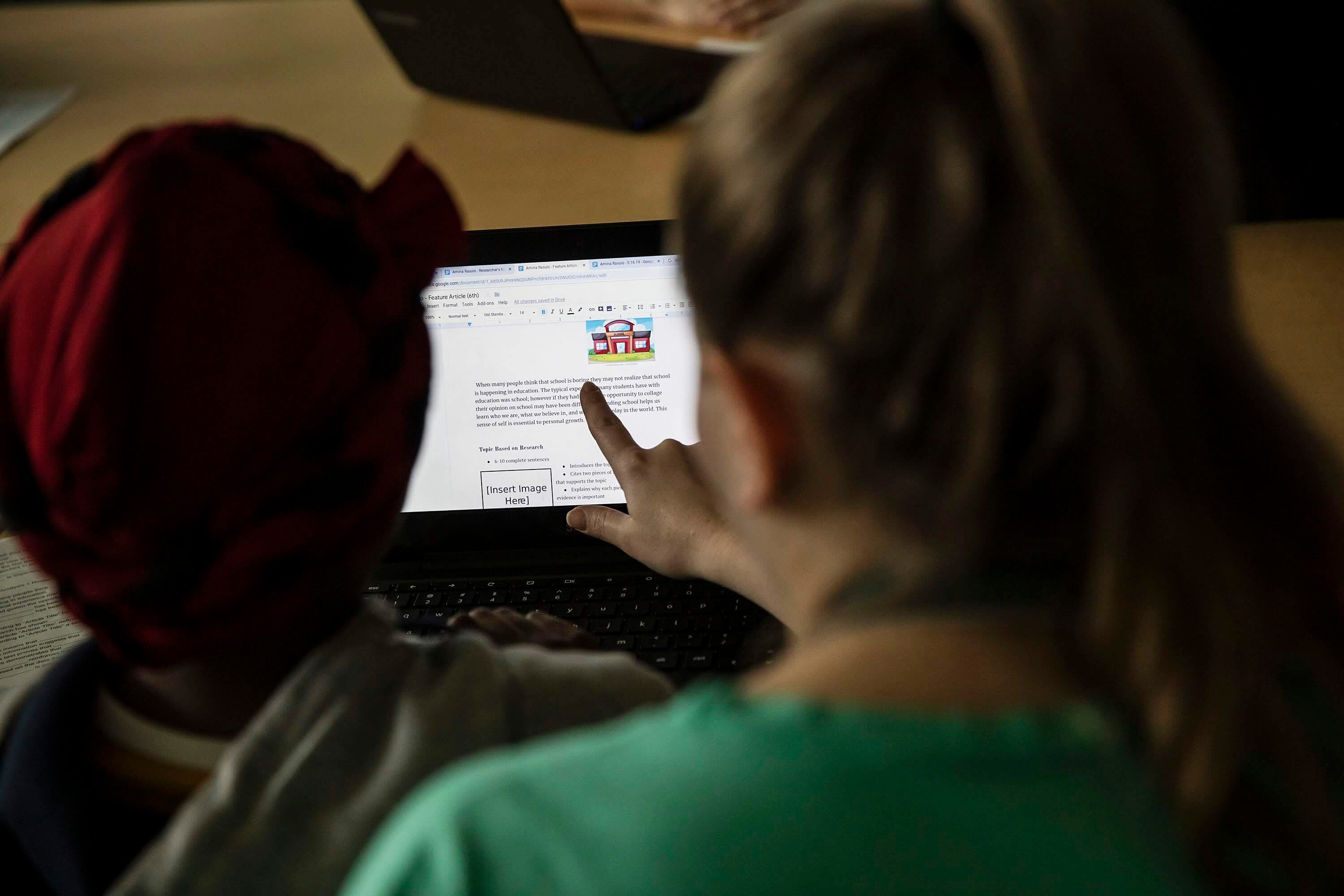To give students an academic boost after two years of pandemic schooling, Denver Public Schools is spending federal and state coronavirus relief money on high-dose tutoring — three times a week for at least 30 minutes — for students in both math and literacy.
“It’s a big investment and meant to support students with learning recovery,” said Brittany Miller, the district’s senior director of expanded academic learning.
But she added that “by no means is tutoring meant to be the next silver bullet for education. This is to supplement what happens with strong teachers delivering strong core instruction.”
Test score data shows Denver students have gaps in their learning. For instance, just 46% of Denver students in kindergarten through third grade were reading at grade level or above this fall, according to district test data presented to the school board in December. That’s down from 56% in fall 2020 and 53% in fall 2019, before the pandemic.
State test data from last spring showed a similar trend. In literacy, 36% of Denver students in grades three through eight scored at or above grade level, down from 43% in 2019. In math, 22% of students scored at or above grade level, down from 33% in 2019.
Tutoring is one way Denver Public Schools is spending $205 million in federal education relief funding over the next 2½ years to try to fill those gaps. The district also recently won a state tutoring grant through a program created by state lawmakers to address pandemic learning loss. The grant awards Denver $2 million this school year, with the potential for more next year, a Colorado Department of Education spokesperson said.
Denver’s approach focuses on grade-level tutoring, meaning fifth-graders get help with fifth-grade math instead of going back and reviewing third- or fourth-grade concepts. Grade-level tutoring is in line with Denver’s philosophy of accelerating learning.
“We want to make sure we’re focused on what kids are learning in the moment and not what we think they might have missed in the past,” Miller said.
Not all Denver schools or students are participating. Schools can opt in to the tutoring program, which began in October with middle and high school math. In January, the district added math tutoring for fourth and fifth graders. Thus far, 840 students at 16 schools are participating in math tutoring, Miller said. That’s out of 90,000 students districtwide.
The students were identified by their schools, with an emphasis on serving students of color, students from low-income families, students with disabilities, students learning English as a second language, and students adversely impacted by COVID, Miller said.
The math tutoring is conducted virtually with tutors from a California-based company called Cignition, with local teachers serving as proctors. Most schools are hosting it during the school day, though Miller said some are doing it before or after school if that works better for them.
In a few weeks, the district will begin offering literacy tutoring for students in kindergarten through third grade who need help learning to read. The literacy tutoring will happen in person with local tutors hired by a Virginia-based company called University Instructors. Thus far, 11 schools and 640 students have signed up, Miller said.
For the first time ever, the contracts between Denver Public Schools and the tutoring companies are outcomes-based. The district is paying the companies 60% of their fee up front and the remaining 40% if students make a certain amount of academic progress.
For the literacy tutoring contract, for example, students must make an average of a year’s worth of growth as measured by a reading test called iStation after 36 hours of tutoring.
The cost of the tutoring varies by contract and depends on the number of students served. For instance, the literacy contract will pay University Instructors up to $2,400 per student for as many as 500 students for a total potential cost of $1.2 million. The district’s goal is to serve 5,000 students over the next three years, through the 2023-24 school year, Miller said.
The district is also running a smaller, teacher-led tutoring program for elementary students. That program, which launched in October, pays Denver teachers to tutor students before or after school and provides them 30 minutes of paid planning time for every hour they tutor.
Teachers who served on a district design group last spring suggested the district contract with outside vendors for middle and high school tutoring, but keep elementary tutoring in house, Miller said. But with ongoing pandemic challenges, including staffing shortages caused by the omicron variant, fewer teachers signed up to tutor than the district was expecting. Because of that, the district decided to contract for the elementary tutoring as well, Miller said.
Melanie Asmar is a senior reporter for Chalkbeat Colorado, covering Denver Public Schools. Contact Melanie at masmar@chalkbeat.org.








